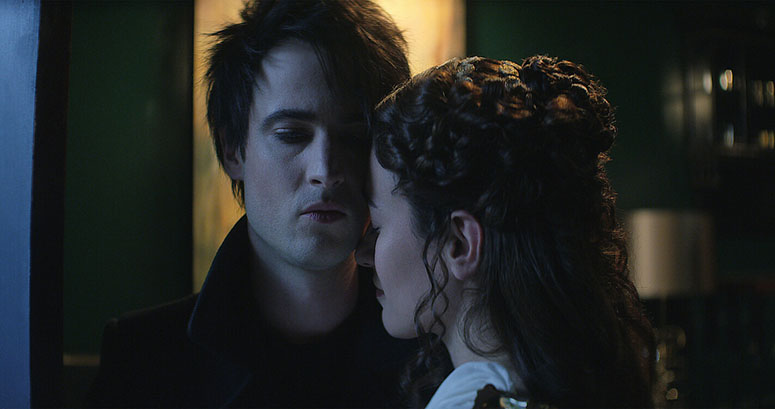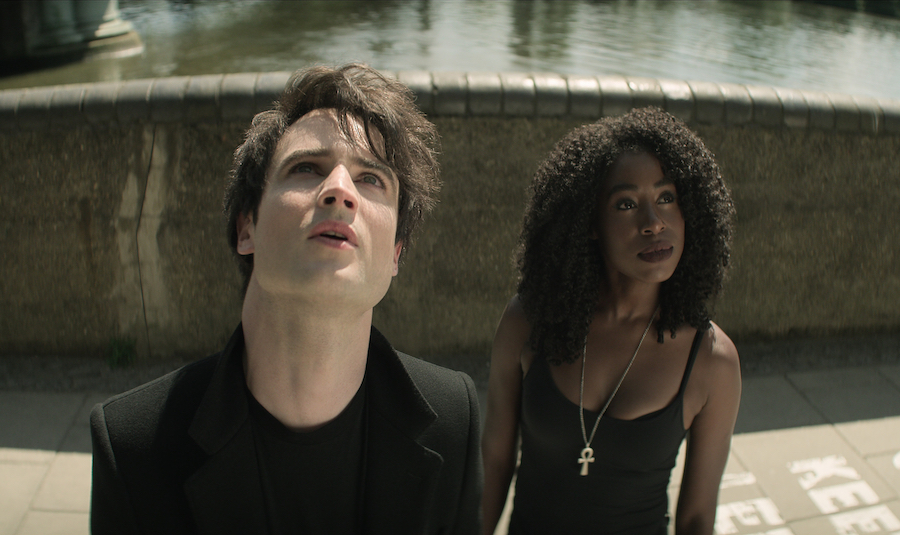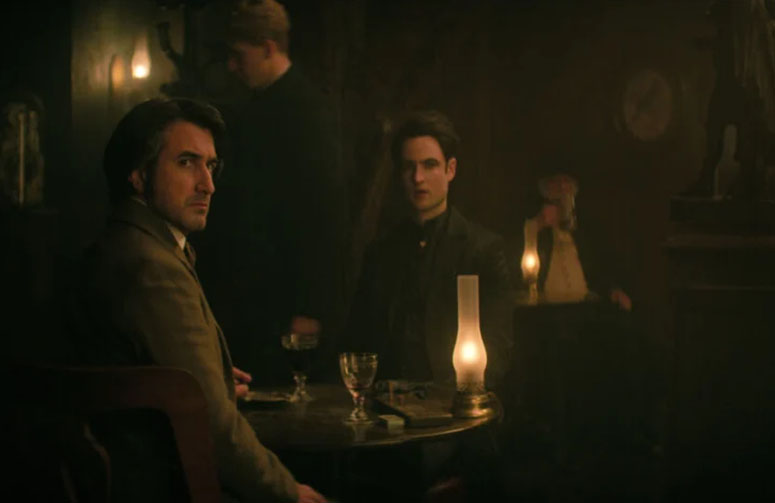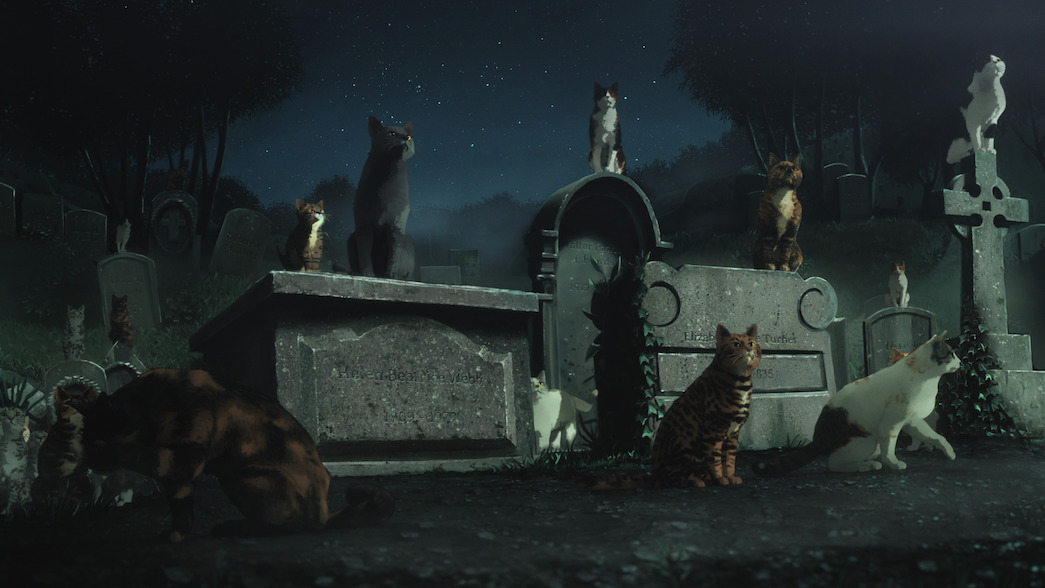Neil Gaiman on calamansi, adaptations as sausages, and the future of 'The Sandman' series
Neil Gaiman is a busy man. The prolific author is currently showrunning and editing two television series, finishing a new novel, and busy promoting The Sandman—which is, by all accounts, the biggest streaming show everywhere.
Gaiman gave an exclusive interview with a small number of media outlets in the Philippines recently, including PhilSTAR L!fe.
He talks to us about working with Tom Sturridge, learning from his experience with the Good Omens and American Gods adaptations and gave insights into his creative process.
Q: In a BBC interview Tom Sturridge described you as a mentor and being extremely generous. How do you describe him and your relationship with him?
Neil: I love the peculiar dichotomy that is Tom Sturridge because on the one hand you have Morpheus, god of dreams—a being of infinite wisdom and gravity whose every line is a poetic utterance of magic and of import and of poetry. And on the other hand you’ve got Tom Sturridge who, despite being 37 years old, is frankly 12. He is one of those, you know, awkward, giggly, slightly embarrassed 12-year old. And somehow they managed to be the same person. And I loved that.
I love the depth that he brings to Morpheus, and I also love the incredibly kind, incredibly sweet, very very funny (person that he is). At a premier in London, I got to meet his 10-year old daughter Marlowe who is a force of nature. And I think he (Sturridge) actually cared more about what Marlowe thought about his performance than any of us. And when she liked it, I watched him being more relieved and overjoyed than I could possibly have imagined.

PhilSTAR L!fe: How much has your experience as producer/showrunner previously informed this Sandman adaptation?
Neil: To be honest, I don’t think this Sandman adaptation could’ve happened if I hadn’t had done Good Omens. I mean, in some ways, perhaps if I hadn’t have not done American Gods and watched American Gods happening at a distance—sometimes being brilliant, and sometimes it was like watching a slow-motion car crash that you were powerless to do anything about because you are on the side of the road just watching it heading for the wall.
With Good Omens, I wrote it, I made it. I was responsible for this giant Amazon-BBC 70-million dollar show, and I walked away going “Oh okay, I can do this. I know how this thing works.” And everybody else went “OH, Neil can do this.” Up until that point I had (only) been the ‘writer of the original comics’. Which meant that, as far as everybody was concerned, their job was to keep me as far away from Sandman as possible, because that’s how it works. Now, suddenly, I was somebody who had….I was already an award-winning writer of screenplays for Dr. Who and things, but now I was somebody who had showrun, produced, made a giant TV show. Which meant that David Goyer’s pitch to Warner TV was “It’s time to do Sandman. It’s time to bring Neil in.”
So really, the fact that I had produced Good Omens was huge because it meant that I actually did understand how the sausage was made, and also how to make a better sausage.
Warner, to their credit, absolutely got that. And Warner’s pitch at the meetings that we had with Netflix and all the other streamers came, and we explained to them why we wanted to do Sandman. But Warner’s pitch, before we told them the story and stuff, was simply the one thing that this has that no other adaptation of Sandman has had over the last three decades is this has Neil. And that was their unique selling point.
So really, the fact that I had produced Good Omens was huge because it meant that I actually did understand how the sausage was made, and also how to make a better sausage. At the end of the day, it also meant that I got to collaborate really well with Allan Heinberg. We worked well together. He is a brilliant showrunner, and it meant that he could do all of the day-to-day stuff, he could look after the writers’ room, do all of that, and I would work with him on casting, and I would work with him on story. And when we get stuck, I work with him on script.
Q: What’s your secret to writing such believable and immersive fictional worlds and characters?
Neil: I guess my secret is trying to believe them myself. I have to be able to believe them for any one else to believe them. If I’m writing, I’m there and I care, and I work as hard as I can to… I don’t want to show you a movie. I want to take you somewhere you haven’t been before and leave you changed. I know that I don’t always succeed, but there are things that I look at that I’ve made, or been part in making, like Coraline, like Good Omens, now like Sandman, where I go “I think I did that”, that thing that I wanted to do where I take your hand and I say “Come with me and I’ll take you somewhere you’ve never been before.” And you’re going to be safe, it’s okay. Then I take them in, and I let go of their hands and run away for a bit. And just as they’re panicking, I come and find them, bring them back into the light. I’m allowed to do that.
Q: The story (in Sandman) is diverse and shows more women and BIPOC and queer characters taking on pivotal roles, which also made the story hit harder. Was that top of mind when doing the adaptation, and in doing so (does that) present any unique challenges?
Neil: You know, what’s really strange about Sandman is how little we had to do of that. Particularly the queer characters where people are like ‘Oh how dare you make Desire non-binary”. Mmm, Desire is non-binary in the comics. The Corinthian is gay in the comics. Alex (Burgess) and Paul (McGuire) are gay in the comics. Judy is gay in the comics. But it was much more fun for us basically being able to interrogate each character as they would turn up, and to say “Okay, is there any reason why this character needs to be, here’s a white character, does he need to be white?” Here is a male character, is there any reason they need to be male? Sometimes the answer was yes. Here we have Gilbert. Gilbert is modeled upon the English writer G.K. Chesterton. Great, I will…a large, rotund gentleman of advancing years, let’s go get Stephen Fry.
But sometimes you get to look at somebody and you go, “okay, well this character is the librarian of dreams”. A white male named Lucien. Is there any reason why they need to be white? No. What’s important is once upon a time there were a raven, and now they are a librarian. Librarians come in all shapes and colors. Is there any reason why they need to be male? No. There is no point in which they use their penis to pick anything up or anything like that. The only thing that is important is that they are the librarian.Librarians can be all genders. Great. Therefore, what that does is double the number of people that we can audition. It doesn’t necessarily mean that we are going to not cast a white person or a male person. What it means is that we get to audition everybody.

What’s interesting is when you start auditioning everybody, you wind up getting some astonishing performances. When we saw Viv Acheampong, we were like “Okay, here’s Lucienne.” So, that kind of thing, for me, is really interesting. And some of it, you know, people are like going “well it’s incredibly brave of you to cast a black woman as Death.” And I’m like “No, it really wasn’t brave.” What we did was we had auditions that you haven’t seen. Well I’ve seen 700 different women reading the parts of Death. And I’ve seen super models, and I’ve seen women of all ethnicities reading that part, and I know that only one of them who said “you’re the sorriest excuse for an anthropomorphic personification of this and any other plane”, and made me believe that line was Kirby Howell-Baptiste (sic). So she’s got the part because I believed that she’s Death, Dream’s big sister. I believe she loves him and isn’t going to take shit from him. And I’d really like to meet her that day that I get hit by a car by crossing the road. If that happens to me, I want her there saying “You really should look both ways crossing the street”, because her performance was that good.
So from my perspective, that’s not brave. That’s not even going “Rah rah rah, diversity!”. That’s just going “Who is the best person for this job? You are! Great!”
Q: Apart from that battle with Lucifer, people couldn’t really stop talking online about Morpheus and Hob Gadling. What is it about their friendship that struck a chord with the audience?
Neil: That story has always been one of people’s favorites in the comics. I think the first thing that we did that was really really important was we didn’t screw it up. I think it would’ve been easier to screw it up than it sounds, but we didn’t. We just…we did it really well.
By and large we got the costuming part right, we got the place right, we got the feeling that time was moving past a hundred years at a time right. Also, more important than any of those things, the casting was right. Ferdie Kingsley, again, it’s one of those things where….I saw a lot of Hob Gadlings. Many Hob Gadlings who said the lines, and I didn’t believe them. And then I saw Ferdie Kingsley and I’m like “Oh! Not only are you saying the lines, but you’re doing something that nobody else in the whole of Sandman is doing, in that you’re saying the lines exactly like I heard them in my head when I wrote them 35 years ago.” This is my Hob. He just lands it so beautifully.
And I think that you get to watch this slowly growing, very very awkward friendship—that at the point where Dream acknowledges that it is a friendship, it’s overwhelming. It’s huge to watch this thing growing since 1389, and you gradually understand that this isn’t a thing that’s happening because Dream is curious. It’s not a science experiment. It’s actually a friendship.

Q: Matthew the raven: small character, big impact. What do you think Morpheus’s life would be without this character?
Neil: I created Matthew because I needed Morpheus to have somebody to explain the plot to. I needed somebody who could stand in for the reader going “Why are you doing this? What’s going on? Can you please explain this to me because this is all too weird.” That is really the joy of having a raven. Plus, ravens are cool. Everybody has known that ravens are cool, even going back to Edgar Allan Poe.
We have people talk a lot about the CGI on the ravens, and the truth is we have three different ravens doing different things. Three raven actors who have three different strengths: one is very good at flying and landing, one’s good at moving around and stuff. I love the fact that when you’re looking at a raven, you’re not looking at a CGI or an animated creation. We’ll use CGI occasionally to tweak things if we need it, but what you’re looking at is a real bird.
I was doing a big talk tonight at 92nd Street Y in New York and we showed a little clip from Episode 4 “In Hell”, and I told them that actually Patton Oswalt is inside the raven costume (laughs). That is not true. Patton Oswalt’s probably just at home somewhere in Los Angeles doing the lines over a microphone. But I just love the idea that really he just sort of squinches himself up really small and hides in to the thing and puts the head on.
PhilSTAR L!fe: The bonus episodes on Season 1 were pleasant surprises. Maybe it’s a bit premature, but is that going to be the way forward with tales from “Fables and Reflections”? Would “World’s End” have its own season since the stories within are pretty self-contained?
Neil: I don’t know. What’s great about making Sandman is we’re learning how to make Sandman as we make Sandman. We’re learning how to do it for television. We’re learning what works, we’re learning things that don’t work.
What I love best about having dropped Episode 11 is, first of all, it was a surprise. We managed to…you know how hard it is to surprise people in these days of social media? We had one idiot who nearly gave it all away, and that was me. And not only did I do it by tweeting some stuff 14 months ago that I shouldn’t have tweeted, but I was at a press conference at San Diego Comic Con and I was listing all of the actors and how great they were to work with. And I remember getting to the point where I said “And then Sir Derek Jacobi (Erasmus Fry)…”, and Allan Heinberg shot me a look. And I said “…isn’t in Sandman, but he’s somebody I’d love to work with!”. And I got out of it pretty bad.

One of the things that I love Episode 11 though is it does feel like it shines a spotlight into the future, in that it’s like, okay Episodes 1-6 are “Preludes and Nocturnes”. Episodes 7-10, they’re “The Doll’s House”. They’re a different kind of story, told in a different kind of way. And here you get “Dream of a Thousand Cats” which shows us one way we can go, and you get “Calliope” which sets everything up really from here until the end. You can’t do the story of Sandman without “Calliope”. And it doesn’t feel like it’s part of “The Doll’s House”. It feels like it’s part of the next thing, whatever the next thing is.
What I love best about having dropped Episode 11 is, first of all, it was a surprise. We managed to…you know how hard it is to surprise people in these days of social media?
PhilSTAR L!fe: When will we see you again here in the Philippines?
Neil: I really miss the Philippines. I want to come back. There is calamansi waiting for me there, and there is none in New York. One day I will get back.
“The Sandman” is currently streaming on Netflix



